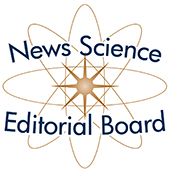Science News: Diagnostic Utility of Gold Coast Criteria in Amyotrophic Lateral Sclerosis
Published November 30, 2021
Education Science News
 Submitted by: Clark Pinyan, MD
Submitted by: Clark Pinyan, MD
Edited by: Niranjan Singh, MD, DM
Hannaford A, Pavey N, van den Bos M, et al. Diagnostic utility of gold coast criteria in amyotrophic lateral sclerosis. Ann Neurol. 2021;89(5):979-986. doi:10.1002/ana.26045
Summary: Existing diagnostic criteria for amyotrophic lateral sclerosis (ALS) such as El Escorial criteria (rEEC) and Awaji criteria have certain limitations, particularly for early disease or atypical presentations of ALS. A new diagnostic criterion has been proposed, with the goal of making it simpler to implement and include atypical presentations.
Gold Coast criteria include 1. Progressive motor impairment documented by either history of repeated clinical assessment, preceded by normal motor function; 2. Presence of upper motor neuron (UMN) and lower motor neuron (LMN) dysfunction in at least one body region or LMN dysfunction in at least two body regions; and 3. Exclusion of mimicking diseases by appropriate investigations (detailed in the text).
Examiners enrolled from a neuromuscular database at two large ALS centers in Australia, and compared sensitivity and specificity to rEEC and Awaji criteria. Sensitivity of Gold Coast criteria for “definite” or “probable” ALS was significantly higher, with lower number needed to test, compared to rEEC and Awaji. Specificity remained comparable across the three criteria. These findings suggest a role for the simpler Gold Coast criteria in the diagnosis of ALS.
Comments: The hope of a simpler and more sensitive ALS diagnostic criteria would be greater inter-rater and cross-center accuracy in diagnosis, simplifying both patient care and future research efforts. The ease of use for the general neuromuscular doctor or neurologist would also lend to greater diagnostic accuracy.
Article of Similar Interest: Gold Coast diagnostic criteria: Implications for ALS diagnosis and clinical trial enrollment. Vucic, S, Ferguson, TA, Cummings, C, et al. Muscle & Nerve. 2021; 1- 6.
